SOURCE:
http://www.andrewerickson.com/2019/07/china-defense-white-papers-1995-2019-download-complete-set-read-highlights-here/
CDS
Part 30 of N Parts
https://bcvasundhra.blogspot.com/2019/11/cds-jointness-pla-part-central-theater.html
Part 29 of N Parts
https://bcvasundhra.blogspot.com/2019/11/part-29-cds-jointness-pla-strategic.html
Part 28 of N Parts
Part 27of N Parts
https://bcvasundhra.blogspot.com/2019/10/chinas-future-naval-base-in-cambodia.html
Part 26 of N Parts
https://bcvasundhra.blogspot.com/2019/10/part-26-cds-jointness-pla-n-strategic.html
Part 25 of N Parts
https://bcvasundhra.blogspot.com/2019/10/part-25-cds-jointness-pla-southern.html
Part 24 of N Parts
https://bcvasundhra.blogspot.com/2019/10/part-24-cds-jointness.html
Part 23 of N Parts
https://bcvasundhra.blogspot.com/2019/10/part-22-cds-jointness-pla-chinas-three.html
Part 22 of N Parts
https://bcvasundhra.blogspot.com/2019/05/peoples-liberation-army-deployment-in.html
Part 21 of N Parts
https://bcvasundhra.blogspot.com/2019/09/cds-part-9-cds-jointness-pla-part-x-of.html
Part 15 of N Parts
https://bcvasundhra.blogspot.com/2019/09/cds-part-10-pla-q-mtn-war-himalayan.html
Part 14 of N Parts
https://bcvasundhra.blogspot.com/2019/09/cds-jointness-pla-part-x-of-n-parts-new.html
Part 13 of N Parts
https://bcvasundhra.blogspot.com/2019/09/cda-jointness-pla-pla-system-of-systems.html
Part 12 of N Parts
https://bcvasundhra.blogspot.com/2019/09/part-12-cds-jointness-pla-military.html
Part 11 of N Parts
https://bcvasundhra.blogspot.com/2019/09/china-defense-white-papers1995.html
Part 10 of N Parts
https://bcvasundhra.blogspot.com/2019/09/part-10-cds-jointness-pla-series.html
Part 9 of N Parts
https://bcvasundhra.blogspot.com/2019/09/source-httpwww.html
Part 8 of N Parts
https://bcvasundhra.blogspot.com/2019/09/cda-part-goldwater-nichols-department.html
Part 7 of N Parts
https://bcvasundhra.blogspot.com/2019/08/cds-part-6-chief-of-defence-staff-needs.html
Part 6 of N Parts:
https://bcvasundhra.blogspot.com/2019/08/the-constitutional-provisions-for.html
Part 5 of N Parts:
https://bcvasundhra.blogspot.com/2019/08/part-4-cds-or-gateway-to-institutional.html
Part 4 of N Parts:
https://bcvasundhra.blogspot.com/2019/08/cds-part-3-chief-of-defence-staff.html
Part 3 of N Parts:
https://bcvasundhra.blogspot.com/2019/08/fighting-separately-jointness-and-civil.html
Part 2 of N Parts:
https://bcvasundhra.blogspot.com/2019/08/jointness-in-strategic-capabilities-can.html
Part 1 of N Parts
https://bcvasundhra.blogspot.com/2019/09/cds-part-zero-cds-explained-what-is.html
Google to open http://www.andrewerickson.com/wp-content/uploads/2019/07/China-Defense-White-Paper_2013_English-Chinese_Annotated.pdf

Google to open each WHITE Paper
http://www.andrewerickson.com/2019/07/china-defense-white-papers-1995-2019-download-complete-set-read-highlights-here/
CDS
Part 30 of N Parts
https://bcvasundhra.blogspot.com/2019/11/cds-jointness-pla-part-central-theater.html
Part 29 of N Parts
https://bcvasundhra.blogspot.com/2019/11/part-29-cds-jointness-pla-strategic.html
Part 28 of N Parts
Part 27of N Parts
https://bcvasundhra.blogspot.com/2019/10/chinas-future-naval-base-in-cambodia.html
Part 26 of N Parts
https://bcvasundhra.blogspot.com/2019/10/part-26-cds-jointness-pla-n-strategic.html
Part 25 of N Parts
https://bcvasundhra.blogspot.com/2019/10/part-25-cds-jointness-pla-southern.html
Part 24 of N Parts
https://bcvasundhra.blogspot.com/2019/10/part-24-cds-jointness.html
Part 23 of N Parts
https://bcvasundhra.blogspot.com/2019/10/part-22-cds-jointness-pla-chinas-three.html
Part 22 of N Parts
https://bcvasundhra.blogspot.com/2019/05/peoples-liberation-army-deployment-in.html
Part 21 of N Parts
https://bcvasundhra.blogspot.com/2019/09/cds-part-9-cds-jointness-pla-part-x-of.html
Part 16 TO Part 20 of N Parts
https://bcvasundhra.blogspot.com/2019/10/part-16-to-part-20-cds-jointness-list.htmlPart 15 of N Parts
https://bcvasundhra.blogspot.com/2019/09/cds-part-10-pla-q-mtn-war-himalayan.html
Part 14 of N Parts
https://bcvasundhra.blogspot.com/2019/09/cds-jointness-pla-part-x-of-n-parts-new.html
Part 13 of N Parts
https://bcvasundhra.blogspot.com/2019/09/cda-jointness-pla-pla-system-of-systems.html
Part 12 of N Parts
https://bcvasundhra.blogspot.com/2019/09/part-12-cds-jointness-pla-military.html
Part 11 of N Parts
https://bcvasundhra.blogspot.com/2019/09/china-defense-white-papers1995.html
Part 10 of N Parts
https://bcvasundhra.blogspot.com/2019/09/part-10-cds-jointness-pla-series.html
Part 9 of N Parts
https://bcvasundhra.blogspot.com/2019/09/source-httpwww.html
Part 8 of N Parts
https://bcvasundhra.blogspot.com/2019/09/cda-part-goldwater-nichols-department.html
Part 7 of N Parts
https://bcvasundhra.blogspot.com/2019/08/cds-part-6-chief-of-defence-staff-needs.html
Part 6 of N Parts:
https://bcvasundhra.blogspot.com/2019/08/the-constitutional-provisions-for.html
https://bcvasundhra.blogspot.com/2019/08/part-4-cds-or-gateway-to-institutional.html
Part 4 of N Parts:
https://bcvasundhra.blogspot.com/2019/08/cds-part-3-chief-of-defence-staff.html
https://bcvasundhra.blogspot.com/2019/08/fighting-separately-jointness-and-civil.html
Part 2 of N Parts:
https://bcvasundhra.blogspot.com/2019/08/jointness-in-strategic-capabilities-can.html
Part 1 of N Parts
China Defense White Papers—1995-2019—Download Complete Set + Read Highlights Here
Documents—PRC government
Since I couldn’t find a single-source location on the Internet, and various official PRC websites have deactivated some of the previous links, I decided to make my own. Now you can download cached PDFs of all China’s Defense White Papers directly by year!
Except for the 2019 edition, which is accessible here; and the 2015 edition, which is accessible here; almost all other China Defense White Papers can be accessed in English here.
Former U.S. Army foreign area officer and attaché Dennis Blasko has been collecting, reading, and analyzing these documents since 1995. His classic book The Chinese Army Today, now in its second edition, remains an essential reference in the field. Some of his yellow highlighting and personal comments can be found in [ ] in the bilingual English- and Chinese-language text of the PDFs of the papers linked below.
2019
Google to open
https://csis-prod.s3.amazonaws.com/s3fs-public/publication/190724_China_2019_Defense.pdf
Google to open
https://csis-prod.s3.amazonaws.com/s3fs-public/publication/190724_China_2019_Defense.pdf
2010
Google to open http://www.andrewerickson.com/wp-content/uploads/2019/07/China-Defense-White-Paper_2010_English-Chinese_Annotated.pdf
Google to open http://www.andrewerickson.com/wp-content/uploads/2019/07/China-Defense-White-Paper_2010_English-Chinese_Annotated.pdf
2008
Google to open http://www.andrewerickson.com/wp-content/uploads/2019/07/China-Defense-White-Paper_2008_English-Chinese.pdf
Google to open http://www.andrewerickson.com/wp-content/uploads/2019/07/China-Defense-White-Paper_2008_English-Chinese.pdf
2006
Google to open http://www.andrewerickson.com/wp-content/uploads/2019/07/China-Defense-White-Paper_2006_English-Chinese_Annotated.pdf
Google to open http://www.andrewerickson.com/wp-content/uploads/2019/07/China-Defense-White-Paper_2006_English-Chinese_Annotated.pdf
2004
Google to open http://www.andrewerickson.com/wp-content/uploads/2019/07/China-Defense-White-Paper_2004_English-Chinese_Annotated.pdf
Google to open http://www.andrewerickson.com/wp-content/uploads/2019/07/China-Defense-White-Paper_2004_English-Chinese_Annotated.pdf
2002
Google to open http://www.andrewerickson.com/wp-content/uploads/2019/07/China-Defense-White-Paper_2002_English-Chinese_Annotated.pdf
Google to open http://www.andrewerickson.com/wp-content/uploads/2019/07/China-Defense-White-Paper_2002_English-Chinese_Annotated.pdf
2000
Google to open http://www.andrewerickson.com/wp-content/uploads/2019/07/China-Defense-White-Paper_2000_English.pdf
Google to open http://www.andrewerickson.com/wp-content/uploads/2019/07/China-Defense-White-Paper_2000_English.pdf
1998
Google to open http://www.andrewerickson.com/wp-content/uploads/2019/07/China-Defense-White-Paper_1998_English-Chinese.pdf
Google to open http://www.andrewerickson.com/wp-content/uploads/2019/07/China-Defense-White-Paper_1998_English-Chinese.pdf
1995
Google to open http://www.andrewerickson.com/wp-content/uploads/2019/07/China-Defense-White-Paper_1995_Arms-Control_English.pdf
Google to open http://www.andrewerickson.com/wp-content/uploads/2019/07/China-Defense-White-Paper_1995_Arms-Control_English.pdf
___________________________________________________
___________________________________________________
--------------------------------------------------------------------------------
OFFICIAL SUMMARIES
China’s Ministry of National Defense summarized all the Defense White Papers up to 2015 in the contemporary article below (which is appended to the end of the 2015 edition):
China’s Military Strategy is the ninth white paper on national defense published by the Chinese government. An overview of all the defense white papers published by China over the years shows that each of them has distinctive characteristics.
Published in July 1998, about 22,000 Chinese characters
Keyword: cooperation
This white paper created the first complete and systemic framework for China’s white paper on national defense that was consistent with not only the international practices but also the Chinese characteristics. For the first time China systematically expounded on its defense policies and explicitly expressed its new outlook on security.
It was also the first time that China made judgment about the cross-straits relation in a government document on national defense, reaffirming that “the Chinese government seeks to achieve the reunification of the country by peaceful means, but will not commit itself not to resort to force.”
Published in October 2000, about 24,000 Chinese characters
Keyword: serious
The white paper highlighted the serious security situation, emphasized that “in today’s world, factors that may cause instability and uncertainty have markedly increased and the world is far from peaceful,” and stressed that China always prioritizes safeguarding its sovereignty, unity and territorial integrity and safety.
The section on defense policy especially expatiated on the Taiwan issue for the first time, reiterating that creating splittism means giving up peace across the Taiwan Straits.
Published in December 2002, about 28,000 Chinese characters
Keyword: coordination
For the first time the white paper put forth five national interests as the fundamental basis for defense policy and systematically expounded on the military strategy and guideline in the new era.
The new chapter on Armed Forces comprehensively introduced the composition of the Chinese People’s Liberation Army (PLA), the Chinese People’s Armed Police Force and the Chinese militia.
It also gave a special introduction to the Army, Navy, Air Force and the Second Artillery Force (SAF) of the PLA, and released the aircraft number of the aviation regiment as well as the aircraft-pilot ratio.
Published in December 2004, about 31,000 Chinese characters
Keyword: military reform
The 16th National Congress of the Communist Party of China (CPC) proposed that the military shall accomplish the dual historical missions of mechanization and informatization. The white paper set aside an independent chapter on revolution in military affairs with Chinese characteristics, which comprehensively laid down the basic guidelines and principles for that purpose.
It also expounded on a number of new topics for the first time, including “reducing the military staffs by 200,000,” “intensifying the development of the Navy, Air Force and the SAF of the PLA” and “promoting informatization.”
Published in December 2006, about 25,000 Chinese characters
Keyword: peaceful development
The world is in a critical period of multi-polarization. For the first time this white paper put forth the concept of national security strategy and comprehensively analyzed China’s security environment.
It also publicized the main strategic thoughts on the development of the PLA Army, Navy, Air Force and the SAF as well as on China’s nuclear strategy, and set aside an independent chapter to introduce the Chinese People’s Armed Police Force and the information about border defense and coastal defense.
Published in January 2009, about 30,000 Chinese characters
Keyword: defense expenditure
For the first time the white paper introduced China’s strategic blueprint for national defense development and expounded on the basic mission of China’s strategic missile troops and the specific tasks of its nuclear missile forces.
It set aside independent chapters on the PLA Army, Navy, Air Force and the SAF respectively for the first time and comprehensively introduced their development in such aspects as development history, structure and organization, and force building.
Basic data about the expenditure on national defense in the 30 years since the reform and opening up, size of public security and border defense forces and scale of militia force were also publicized for the first time.
Published in March 2011, about 29,000 Chinese characters
Keyword: military mutual trust
For the first time the white paper expounded on the issue of building the military security mechanism of mutual trust across the Taiwan Straits and comprehensively expatiated on the diversified employment of China’s armed forces in peacetime.
For the first time it introduced the military modernization drive since the founding of the People’s Republic of China and set forth the Chinese military’s efforts to establish the joint operation system.
It also for the first time introduced the development of military legal system, implementation of laws and regulations, and military judicial system, systematically elaborated on the objectives and principles of building military mutual trust under new circumstances, and gave an all-round introduction to what China had done to promote military mutual trust in recent years.
Published in April 2013, about 15,000 Chinese characters
Keyword: innovation
This was the first national defense white paper on a specific topic published by the Chinese government. While making new judgment of the security situation, the white paper illustrated the principles for diversified employment of China’s armed forces and officially publicized the designations of the 18 Group Armies in the PLA Army for the first time.
It also revealed the size of the PLA Army’s operational troops, the PLA Navy and the Air Force as well as the missile types equipped in the SAF, making China’s armed forces more transparent.
Published in May 2015, about 9,000 Chinese characters
Keywords: mission, task
This is the first time that the Chinese government published a white paper specialized in China’s military strategy. The white paper systematically expounded on the Chinese military’s missions and strategic tasks in the new era for the first time, pointed out that the basic point in making preparation for military struggle (PMS) shall be focused on winning local wars in conditions of modern technology, and highlighted maritime military struggle and maritime PMS.
In particular, a series of statements that have never appeared in previous white papers are included in China’s Military Strategy, such as the PLA Navy shall be “in line with the strategic requirement of offshore waters defense and open seas protection,” the PLA Air Force shall be “in line with the strategic requirement of building air-space capabilities and conducting offensive and defensive operations,” “the traditional mentality that land outweighs sea must be abandoned” and “expediting the development of a cyber force.”
IN-DEPTH ANALYSIS:
The 2015 Chinese Defense White Paper on Strategy in Perspective: Maritime Missions Require a Change in the PLA Mindset
Superb analysis from Dennis Blasko on China’s recently released defense white paper on strategy. A disciplined adherent to what might be termed a strict “zero-based budgeting” approach to analysis, Blasko never makes statements that cannot be supported with extremely specific, contextualized, well-documented evidence. When he makes the bold, underlined statements below, therefore, everyone should pay close attention! It is no small thing to declare that “the white paper makes a ‘new’ statement that turns the PLA’s traditional approach to operations and strategy on its head, or at least on its side” and that “The white paper has thereby acknowledged the need to shift the balance in PLA thinking from ground operations to joint naval and aerospace operations… The impact of this admission on the PLA as an institution cannot be understated.” Coming from Blasko, however, such assertions have true credibility. To which I would add: there’s never been a more exciting time to follow China’s military maritime and aerospace development!
Click here to see underlines and highlights of key text in China’s 2015 Defense White Paper on strategy.
Dennis J. Blasko, “The 2015 Chinese Defense White Paper on Strategy in Perspective: Maritime Missions Require a Change in the PLA Mindset,” Jamestown China Brief 15.2 (29 May 2015).
Nearly 20 years ago in November 1995, the Information Office of the State Council of the People’s Republic of China issued the first defense-related white paper on “Arms Control and Disarmament.” In 1998, the first “defense white paper” was issued, called simply “China’s National Defense.” Subsequently, roughly every two years a new defense-related white paper has been issued. On May 26, 2015 the tenth defense-related white paper was released called “China’s Military Strategy.” …
The 2015 White Paper
Despite the increased tensions in the Pacific region, the 2015 white paper reiterates the peace and development theme and assesses “In the foreseeable future, a world war is unlikely, and the international situation is expected to remain generally peaceful, ” but “the world still faces both immediate and potential threats of local wars.” Under these new circumstances, “the national security issues facing China encompass far more subjects, extend over a greater range, and cover a longer time span than at any time in the country’s history.” Therefore, without “a strong military, a country can be neither safe nor strong.” A strong military is the basis for China’s multi-dimensional strategic deterrence posture as well as necessary to carry out its warfighting and military operations other than war or non-traditional security tasks. …
However, the main theme for the 2015 white paper is the “long-standing task for China to safeguard its maritime rights and interests.” In particular, “the US carries on its ‘rebalancing’ strategy and enhances its military presence and its military alliances in this region. Japan is sparing no effort to dodge the post-war mechanism, overhauling its military and security policies.” Additionally, “some of its offshore neighbors take provocative actions and reinforce their military presence on China’s reefs and islands that they have illegally occupied. Some external countries are also busy meddling in South China Sea affairs; a tiny few maintain constant close-in air and sea surveillance and reconnaissance against China.” Thus as an example of the evolution in China military strategy, this year a new “strategic task” has been added: “To safeguard the security of China’s overseas interests.” Currently, most foreign analysts assess China’s overseas interests to include substantial maritime aspects, as previously inferred from the historic missions to safeguard China’s national development and national interests.
In order to address the maritime challenge, the white paper makes a “new” statement that turns the PLA’s traditional approach to operations and strategy on its head, or at least on its side: “The traditional mentality that land outweighs sea must be abandoned, and great importance has to be attached to managing the seas and oceans and protecting maritime rights and interests.” As a result, the PLA Navy “will gradually shift its focus from ‘offshore waters defense’ to the combination of ‘offshore waters defense’ with ‘open seas protection,’” an evolutionary development from what was announced in the 2006 white paper, the “Navy aims at gradual extension of the strategic depth for offshore defensive operations.”
The white paper has thereby acknowledged the need to shift the balance in PLA thinking from ground operations to joint naval and aerospace operations—something that has been signaled for years (going back officially at least to 2004), but will require change in all aspects of future military modernization. The impact of this admission on the PLA as an institution cannot be understated. It will have effects on everything from force size, structure and composition to personnel polices, doctrine, training, logistics and equipment acquisition.
This development would appear to be directly related to the November 2013 announcement at the Third Plenary Session of the 18th Chinese Communist Party Central Committee “that joint operation command authority under the [Central Military Commission], and theater joint operation command system, will be improved” and decided to “optimize the size and structure of the army, adjust and improve the proportion between various troops, and reduce non-combat institutions and personnel.” [3] Though no details of these changes have been announced publicly, we can expect them to be rolled out in the coming years and take several more years to implement and trouble shoot. …
Andrew S. Erickson, “China’s 2013 Defense White Paper (‘The Diversified Employment of China’s Armed Forces’/‘中国武装力量的多样化运用’) Just Released,” China Analysis from Original Sources 以第一手资料研究中国, 15 April 2013.
Here’s my initial read:
As its name implies, this latest PRC Defense White Paper provides an overall survey not only of further development of core PLA capabilities, but also of an array of secondary roles and missions that is broadening in nature and geographic scope.
In terms of specific data points, it is interesting that personnel figures in the White Paper vary so markedly from those in the recently-published International Institute for Strategic Studies (IISS) volume The Military Balance 2013. By the way, I strongly recommend this excellent series, which is the product of intensive and careful analysis. I have consulted and cited it frequently. The 2013 volume has a particularly interesting chapter on Asia.
According to The Military Balance 2013, China’s 2,285,000-person armed forces are composed of the PLA and the 660,000-person People’s Armed Police (PAP). Today’s PLA is divided into the ground forces (1.6 million personnel), the People’s Liberation Army Navy (PLAN) (255,000), the People’s Liberation Army Air Force (PLAAF) (300,000-330,000), and the Second Artillery Force (SAF) (100,000).
Beijing’s 2013 Defense White Paper, by contrast, states that “the PLAN has a total strength of 235,000 officers and men” and “[t]he PLAAF now has a total strength of 398,000 officers and men.”
One thing is clear: there’s still so much left to discover about the PLA!
Gabriel B. Collins and Andrew S. Erickson, “China Defense White Paper 2010: Better Transparency, But What Key Developments Were Left Out of the Discussion?,” China SignPost™ (洞察中国) 32 (5 April 2011).
China SignPost™ 洞察中国–“Clear, high-impact China analysis.”©
- Reprinted as: Gabriel B. Collins and Andrew S. Erickson, “Grading China’s Military Plans,” The Diplomat, 9 April 2011.
China’s National Defense in 2010 continues the tradition of offering additional bits of incremental information each year, but still refrains from delving into the concrete discussion of China’s military capabilities that foreign defense analysts hope for. To its credit, the 2010 White Paper is a carefully-written document that offers insight into China’s defense policy and some general trends in its military development. Beijing’s ongoing moves toward defense transparency are positive even if they fall short of foreign expectations.
We recognize that China’s Defense White Papers to date have shied away from discussing specific systems and capabilities, but believe that even discussions that might not be as fact-rich as documents published by the U.S. or other foreign militaries would still help China build strategic trust with other regional powers. In addition, a rapidly modernizing military like China’s that performs an increasing range of activities in its home region has much to gain from greater transparency about capabilities and intentions, as such disclosure could help reduce its neighbors’ incentives to create new negatively-focused security arrangements aimed at counteracting the rising power.
With regard to higher transparency regarding equipment and capabilities among militaries outside of the PRC, the U.S. military’s Quadrennial Defense Review and Nuclear Posture Review are excellent examples of documents that combine discussion of strategic intentions with more detailed and concrete discourse on hardware and acquisition plans. In addition, other militaries tend to publish a regular flow of official policy statement and documents discussing procurement and other activities. The biannual China Defense White Paper, on the other hand, has covered insufficiently or overlooked entirely key developments in a rapidly changing country where two years of change can be far more momentous than would be the case in the U.S., Japan, or the EU.
A number of specific military developments cause significant concern to China’s Asian neighbors,as well as the U.S. If the PRC leadership were to permit a more detailed discussion of these types of matters in future White Papers, it would likely help assuage foreign concerns about China’s military modernization in Asia and beyond.
To help quantify the importance of the systems and developments that are not discussed, but in our opinion should be, we assign them an importance ranking of between 1.0 and 10.0, with a higher number suggesting that an issue is of more pressing concern to foreign analysts of China’s military development.
China’s anti-ship ballistic missile (ASBM) development (9.0)
The report contains no mention of China’s ASBM program, which, according to the U.S. Navy, reached the equivalent of initial operational capability in late 2010. The timing of this particular announcement might be a bit late for inclusion in the report, especially with Beijing’s official silence on the matter, but for the program to reach the equivalent of IOC in late 2010, it had been in development for a number of years prior. From the perspective of the U.S. and regional militaries, an operational Chinese ASBM system with a range that is likely at least 1,500 km is a major event, since may prompt a re-think of carrier operations within a threat envelope that now potentially extends far into the South China Sea, Northern Indian Ocean, and Western Pacific.
In turn, any restrictions on carrier operations would have two key effects: (1) they could cause U.S. allies in the region to question Washington’s true security commitment during a confrontation with China, since the U.S. might be perceived as confronting a choice as to whether to expose carriers to serious risk of damage, for example; and (2), the ASBM reinforces the importance of submarines for regional navies, since large capital surface ships may not be nearly as survivable as before, particularly for countries other than the U.S. and Japan that lack advanced ship-based anti-ballistic missile systems.
For more information on China’s ASBM program and assessment of initial operational capability, please see:
Andrew S. Erickson and Gabriel B. Collins, “China Deploys World’s First Long-Range, Land-Based ‘Carrier Killer’: DF-21D Anti-Ship Ballistic Missile (ASBM) Reaches ‘Initial Operational Capability’ (IOC),” China SignPost™ (洞察中国) 14 (26 December 2010).
China rapidly growing space-based intelligence, surveillance, and reconnaissance (ISR) capabilities (7.0)
In 2010, China’s number of space launches equaled the U.S. launch figure for the first time. More importantly, a significant portion of China’s launches involved satellites that are helping to build up a persistent and survivable ISR capability along China’s maritime periphery and beyond. China has launched 7 Yaogan surveillance satellites since December 2009, suggesting that a more robust spaced-based reconnaissance capability is a high priority for the PRC. Yaogansatellites 9 A, B, C are particularly interesting because they fly in a formation, which suggests that they function as some form of naval ocean surveillance system (NOSS). Jane’s says these satellites carry infrared sensors to help them locate ships, meaning they could probably provide accurately positional locations for ASBM targeting. China is also reportedly preparing to launch a second Tianlian data link satellite in June 2011, which in conjunction with the existing Tianlian-1, could provide coverage over as much as 75% of the earth’s surface. Improved data linking capabilities would help strengthen China’s ASBM “kill chain” by further linking sensors with shooters.
ABM/ASAT test in January 2010 (6.5)
In January 2010, China successfully tested a midcourse intercept anti-ballistic missile (ABM) system likely based on the same SC-19 booster system that powered the direct ascent anti-satellite (ASAT) system the PLA used to destroy an aging weather satellite in January 2007. China’s multiple successful tests indicate that the PLA is becoming proficient at using hit to kill kinetic intercept vehicles that could be launched from Chinese soil and hold valuable U.S. reconnaissance and other military satellites at risk during a conflict.
The J-20 advanced fighter test flight (5.5)
China’s first test of a 4+ generation fighter comes 20 years behind that of the U.S. (the F-22 Raptor first flew in 1990), but could become an aircraft that makes Washington rue its decision to cap F-22 Raptor production at 187 aircraft. Analysis from Airpower Australia’s Dr. Carlo Koppstrongly suggests that a J-20 with 5th generation characteristics could outperform the F-35 Lightning II at virtually all levels, potentially leaving the U.S. and allies operating the F-35 at a disadvantage to a PLA Air Force armed with supercruising, stealthy, and maneuverable J-20s. Of course, there are a wide variety of other ways to target and mitigate attacks from opposing aircraft.
For additional in-depth analysis of the J-20 program and its strategic implications, please see:
Gabriel B. Collins and Andrew S. Erickson, “China’s New Project 718/J-20 Fighter: Development Outlook and Strategic Implications,” China SignPost™ (洞察中国) 18 (17 January 2011).
China’s aircraft carrier development (5.0)
The 2010 China Defense White Paper also contained no mention of China’s aircraft carrier program. The New York Times reports that one of the paper’s presenters, Sr. Col. Geng Yansheng, sidestepped questions about the carrier program during the 31 March 2011 news conference at which the paper was unveiled.
China appears to be rapidly refurbishing the ex-Soviet carrier Varyag; the U.S. Office of Naval Intelligence (ONI) projects that it will be operational by 2012. According to Asahi Shimbum, China has decided to embark on a national carrier program in which it would build domestically a 50,000-60,000 tonne conventional carrier by 2014 (ONI projects that it will be completed after 2015) and a nuclear-powered carrier by 2020. China certainly faces substantial challenges in equipping a carrier, training pilots in carrier operations, and building a carrier group. That said, the country’s rising defense budget (officially $91.5 billion in 2011) and the experience of domestic shipyards in building increasingly complex large commercial ships make it likely that physical construction barriers can be overcome in a reasonable amount of time.
Mastering the intricacies of carrier operations will take longer and a Chinese carrier group would likely not survive very long in a direct confrontation with the U.S. Navy. Nevertheless, a carrier group would offer immense diplomatic benefits in providing a visible Chinese naval presence in the South China Sea, Southeast Asia, along key sea lanes in the Indian Ocean, and for humanitarian missions such as the response to the 2004 Indian Ocean tsunami. Several carrier groups would be necessary for persistent presence in these areas, however, to allow for periodic maintenance.
For more analysis of how Chinese shipyards’ growing capabilities could help the PLA Navy build an aircraft carrier, please see:
Gabriel B. Collins and Andrew S. Erickson, “LNG Carriers to Aircraft carriers? Assessing the Potential for Crossover between Civilian and Military Shipbuilding in China,” China SignPost™ (洞察中国) 12 (18 December 2010).
The PLA’s growing access to and use of foreign ports and airfields (4.0)
The February/March 2011 Libya evacuation operation involved a forward-deployed PLAN missile frigate, Xuzhou, which had recently replenished in Oman, as well as the use of the Khartoum, Sudan airport to refuel IL-76 transports headed to and from Libya to evacuate Chinese nationals trapped there.
For any future military deployments for noncombatant evacuation operations (NEOs) or other such expeditionary military activities, port and airfield access in the region concerned is crucial for supporting and sustaining platforms involved in the mission. Areas for potential deepening of PLA logistical support and access during times of crisis that merit close watch in coming years include: Tanzania, Kenya, Madagascar, Djibouti, Salalah (Oman), Aden (Yemen), Gwadar and Karachi (Pakistan), Chittagong (Bangladesh), Hambantota (Sri Lanka), Mauritius (where Port Louis has sufficient draft to accommodate a large warship), Sittwe (Burma), and Singapore.
China’s use of military assets to support Libya rescue & evacuation operation (2.0)
The 2010 Defense White Paper makes no mention of the deployment of PLAN and PLAAF forces to help secure the evacuation of Chinese citizens from Libya, an historical first. It will be interesting to see how Beijing evaluates and portrays such efforts in the future. They are positive and understandable, but may raise expectations among Chinese for what their government can do to address subsequent threats to the security of Chinese citizens overseas. China’s 2008 Defense White Paper did not include discussion of the PLA Navy’s precedent-setting Gulf of Aden counter-piracy mission, which began at the very end of 2008, but the deployment made it into the 2010 White Paper. We strongly suspect the 2012 Defense White Paper will include meaningful discussion of the Libya evacuation operation and the PLAN and PLAAF roles in the historic mission.
For more detailed analysis of the unprecedented use of military assets to safeguard Chinese citizens in Libya, please see:
Gabriel B. Collins and Andrew S. Erickson, “The PLA Air Force’s First Overseas Operational Deployment: Analysis of China’s Decision to Deploy IL-76 Transport Aircraft to Libya,” China SignPost™ (洞察中国) 27 (1 March 2011).
Gabriel B. Collins and Andrew S. Erickson, “Missile Frigate Xuzhou Transits Suez Canal, to Arrive off Libya ~Wednesday 2 March: China’s First Operational Deployment to Mediterranean Addresses Libya’s Evolving Security Situation,” China SignPost™ (洞察中国) 26 (27 February 2011).
Gabriel B. Collins and Andrew S. Erickson, “China Dispatches Warship to Protect Libya Evacuation Mission: Marks the PRC’s First Use of Frontline Military Assets to Protect an Evacuation Mission,” China SignPost™ (洞察中国) 25 (24 February 2011).
For analysis of Beijing’s interests in Libya and the surrounding region, see Gabriel B. Collins and Andrew S. Erickson, “Libya Looming: Key Strategic Implications for China of Unrest in the Arab World and Iran,” China SignPost™ (洞察中国) 24 (22 February 2011).
Andrew S. Erickson, “Beijing Issues Latest Defense White Paper ‘China’s National Defense in 2010’: English/Chinese Full Text, Key Excerpts & Analysis,” China Analysis from Original Sources 以第一手资料研究中国, 31 March 2011.
China’s 2010 Defense White Paper follows a pattern by now well-established in these biannual reports on the People’s Liberation Army (PLA). It offers some new details not present in the previous report, but stops well short of offering the degree of detail that foreign analysts and policy makers hope for. Where Western documents typically focus more—and Western analysts expect more information—on specific capabilities, it focuses primarily on more general intentions. While it leaves many questions unanswered, however, it is a carefully-written document that offers insights into China’s defense policy and some general trends in its military development. Beijing’s ongoing moves toward greater transparency (some would say “translucence”) should be applauded, however short they may still fall of foreign expectations.
Here are two larger issues that stood out in my initial reading of the report:
1. I believe that this is the first time that a publicly-issued Chinese government document has used the term “PLA Army” to describe China’s ground forces (as opposed to the PLA as a whole). This highlights the ground forces’ ongoing transformation into a “first among equals” service, as opposed to the utterly dominant service. This suggests growing clout for the PLA Navy (PLAN) and PLA Air Force (PLAAF) as well as the Second Artillery (China’s strategic missile force), though they have a long way to go to fully realize a more equal institutional status in practice. It is part of a larger effort to make the PLA better able to fight “local limited wars under informatized conditions” along China’s contested maritime periphery, particularly within its three “Near Seas” (the Yellow, East China, and South China Seas) and their immediate approaches (beyond the First Island Chain).
2. Also noteworthy is unprecedented coverage of the PLA’s contribution to addressing nontraditional security challenges, as in the PLAN’s deployment of eight (and counting) successive counterpiracy task forces to the Gulf of Aden. This is in accordance with the four New Historic Missions with which President Hu Jintao has charged the PLA. In instances of PLA operations outside China to support UN missions and deter threats from sub-state actors such as pirates, it is a substantive contribution to international security that should be welcomed by the world. Though no nation is truly altruistic in its behavior, China deserves credit for such contributions as they are broadly beneficial.
Among many issues not addressed is the deployment of PLAN and PLAAF forces to help secure the evacuation of Chinese citizens from Libya in February, an historical first. It will be interesting to see how Beijing evaluates and portrays such efforts in the future. They are positive and understandable, but may raise expectations among Chinese for what their government can do to address subsequent threats to the security of Chinese citizens overseas.
In any case, this is definitely a report worth reading. For those who may not have time to do so in fully, however, I have extracted some of the more important excerpts below:
Key Excerpts:
“Prospects for world multi-polarization are becoming clearer.”
“Asia has taken the lead in economic recovery, and its growth as a whole has been sustained.”
“Nevertheless, Asia-Pacific security is becoming more intricate and volatile. Regional pressure points drag on and without solution in sight. There is intermittent tension on the Korean Peninsula.”
“The United States is reinforcing its regional military alliances, and increasing its involvement in regional security affairs.”
“China is meanwhile confronted by more diverse and complex security challenges. China has vast territories and territorial seas.”
“Pressure builds up in preserving China’s territorial integrity and maritime rights and interests. Non-traditional security concerns, such as existing terrorism threats, energy, resources, finance, information and natural disasters, are on the rise. Suspicion about China, interference and countering moves against China from the outside are on the increase.”
“The two sides of the Taiwan Strait are destined to ultimate reunification in the course of the great rejuvenation of the Chinese nation.”
“The two sides may discuss political relations in the special situation that China is not yet reunified in a pragmatic manner. The two sides can hold contacts and exchanges on military issues at an appropriate time and talk about a military security mechanism of mutual trust, in a bid to act together to adopt measures to further stabilize cross-Strait relations and ease concerns regarding military security.”
“The goals and tasks of China’s national defense in the new era are defined as follows:
— Safeguarding national sovereignty, security and interests of national development. China’s national defense is tasked to guard against and resist aggression, defend the security of China’s lands, inland waters, territorial waters and airspace, safeguard its maritime rights and interests, and maintain its security interests in space, electromagnetic space and cyber space.”
“– Maintaining social harmony and stability. … They organize preparations for military operations other than war (MOOTW) in a scientific way, work out pre-designed strategic programs against non-traditional security threats, reinforce the building of specialized forces for emergency response, and enhance capabilities in counter-terrorism and stability maintenance, emergency rescue, and the protection of security.”
“– Accelerating the modernization of national defense and the armed forces. …[The PLA] intensifies theoretical studies on joint operations under conditions of informationization, advances the development of high-tech weaponry and equipment, develops new types of combat forces, strives to establish joint operation systems in conditions of informationization, accelerates the transition from military training under conditions of mechanization to military training in conditions of informationization, presses ahead with implementation of the strategic project for talented people, invests greater efforts in building a modern logistics capability, and enhances its capabilities in accomplishing diversified military tasks in order to win local wars under the conditions of informationization, so as to accomplish its historical missions at the new stage in the new century.”
“– Maintaining world peace and stability. … China adheres to the concepts of openness, pragmatism and cooperation, expands its participation in international security cooperation, strengthens strategic coordination and consultation with major powers and neighboring countries, enhances military exchanges and cooperation with developing countries, and takes part in UN peace-keeping operations, maritime escort, international counter-terrorism cooperation, and disaster relief operations.”
“To meet the new and changing needs of national security, the PLA tries to accentuate modernization from a higher platform. It strengthens the building of a new type of combat capability to win local wars in conditions of informationization, strengthens the composite development of mechanization and informationization with the latter as the leading factor, focuses informationization on raising its fighting capabilities based on information systems, and enhances the capabilities in fire power, mobility, protection, support and informationization.”
“the PLA Army (PLAA)… has made great progress in strengthening its arms. … The artillery component has been working on new types of weapons, equipment, and ammunition with higher levels of informationization, forming an operational and tactical in-depth strike system, and developing the capacity to carry out precision operations with integrated reconnaissance, control, strike and assessment capabilities. The air defense component has stepped up the development of new types of radar, command information systems, and medium- and high-altitude ground-to-air missiles. It has formed a new interception system consisting of anti-aircraft artillery and missiles, and possesses enhanced capabilities of medium- and low-altitude air and missile defense operations.”
“In line with the requirements of offshore defense strategy, the PLA Navy (PLAN) endeavors to accelerate the modernization of its integrated combat forces, enhances its capabilities in strategic deterrence and counterattack, and develops its capabilities in conducting operations in distant waters and in countering non-traditional security threats. It seeks to further improve its combat capabilities through regularized and systematic basic training and actual combat training in complex electromagnetic environments. By organizing naval vessels for drills in distant waters, it develops training models for MOOTW missions. New types of submarines, frigates, aircraft and large support vessels have been deployed as planned. The PLAN enhances the construction of composite support bases so as to build a shore-based support system which matches the deployment of forces and the development of weaponry and equipment. The Navy has accelerated the building of surface logistical platforms by deploying ambulance boats and helicopters, and a standard 10,000 DWT hospital ship, and is working to further improve its surface support capabilities. The Navy explores new methods of logistics support for sustaining long-time maritime missions.”
“To satisfy the strategic requirements of conducting both offensive and defensive operations, the modernization and transformation of the PLA Air Force (PLAAF) follows a carefully-structured plan. It strengthens and improves the PLAAF development and personnel development strategies, and enhances its research into the operation and transformation of air forces in conditions of informationization. The PLAAF is working to ensure the development of a combat force structure that focuses on air strikes, air and missile defense, and strategic projection, to improve its leadership and command system and build up an informationized, networked base support system. It conducts training on confrontation between systems in complex electromagnetic environments, and carries out maneuvers, drills and operational assembly training in different tactical contexts. The PLAAF strengthens routine combat readiness of air defenses, taking the defense of the capital as the center and the defense of coastal and border areas as the key. It has carried out MOOTWs, such as air security for major national events, emergency rescue and disaster relief, international rescue, and emergency airlift. It has gradually deployed airborne early warning and control aircraft, third-generation combat aircraft, and other advanced weaponry and equipment.”
“Following the principle of building a lean and effective force, the PLA Second Artillery Force (PLASAF) strives to push forward its modernization and improves its capabilities in rapid reaction, penetration, precision strike, damage infliction, protection, and survivability, while steadily enhancing its capabilities in strategic deterrence and defensive operations. It continues to develop a military training system unique with the strategic missile force, improve the conditions of on-base, simulated and networked training, conduct trans-regional maneuvers and training with opposing forces in complex electromagnetic environments. It has set up laboratories for key disciplines, specialties and basic education, and successfully developed systems for automatic missile testing, operational and tactical command and control, strategic missile simulation training, and the support system for the survival of combatants in operational positions. It has worked to strengthen its safety systems, strictly implement safety regulations, and ensure the safety of missile weaponry and equipment, operational positions and other key elements. It has continued to maintain good safety records in nuclear weapon management.”
“In line with its strategic objective of building informationized armed forces and winning informationized wars, and with overall planning and phased implementation, the PLA is trying to break through major bottlenecks which hinder the building and improvement of combat effectiveness of systems. The fighting capabilities of the armed forces in conditions of informationization have been significantly raised.”
“A step-change development has been achieved in information infrastructure. The total length of the national defense optical fiber communication network has increased by a large margin, forming a new generation information transmission network with optical fiber communication as the mainstay and satellite and short-wave communications as assistance.”
“Significant progress has been made in building information systems for reconnaissance and intelligence, command and control, and battlefield environment awareness. Information systems have been widely applied in logistics and equipment support. A preliminary level has been achieved in interoperability among command and control systems, combat forces, and support systems, making order transmission, intelligence distribution, command and guidance more efficient and rapid.”
“Strategic planning, leadership and management of informationization have been strengthened, and relevant laws, regulations, standards, policies and systems further improved. A range of measures, such as assembly training and long-distance education, have been taken to disseminate knowledge on information and skills in applying it. Notable achievements have been made in the training of commanding officers for joint operations, management personnel for informationization, personnel specialized in information technology, and personnel for the operation and maintenance of new equipment. The complement of new-mode and high-caliber military personnel who can meet the needs of informationization has been steadily enlarged.”
“The PLA takes the building of joint operation systems as the focal point of its modernization and preparations for military struggle, and strives to enhance its fighting capabilities based on information systems.”
“The PLA upholds that military training is the basic means to generate and raise combat effectiveness, and is working to reform training in all respects, and accelerate the transition from training in conditions of mechanization to training in conditions of informationization.”
“The PLA is further implementing the strategic project for talents in an effort to increase its complement of new-type and high-caliber military personnel. It further promotes the cultivation of a contingent of commanding officers, staff officers, scientists, technical experts and non-commissioned officers (NCOs) by taking the improvement of ideological and political qualities as the foundation, the transformation of capabilities as the main theme, the cultivation of joint operation commanders, informationization professionals, IT specialists, and experts in operating and maintaining new types of equipment as focus.”
“The PLA is laying stress on the training of commanding officers for joint operations and high-level experts in technological innovation. It has published basic readers and held lectures on joint operations through all its arms and services. While giving attention to selecting, commending and rewarding outstanding commanding and staff officers, it has placed particular emphasis on training and promoting excellent staff officers, and company- and battalion-level officers of great potential. To cultivate commanding officers for joint operations, the PLA has also reformed the model for training graduates for its Masters Degree in Military Science. Following the promulgation of Implementation Measures for Military High-Level Personnel Project in Scientific and Technological Innovation, every two years the PLA selects 200 leading scientists and high-performing talents from different disciplines for special training in order to improve their innovation aptitude in science and technology.”
“The PLA is working to reform its NCO selection and training system. It has increased the number of positions for high-tech specialized NCOs, implemented a pre-assignment accreditation system for evaluating the skills of specialized technical NCOs, developed an expert assessment system for selecting senior NCOs, and further improved its NCO training and management system.”
“In order to enhance its logistical support capabilities for diversified military tasks, the PLA is working on a multilateral approach to building a modern logistics system by speeding up the process of integrating systems, outsourcing services, informationizing processes, and managing its logistical support systems in a more scientific way.”
“The PLA meticulously organizes and provides logistical support for key events. Examples are the National Day Parade in celebration of the 60th anniversary of the founding of the People’ s Republic of China, escort operations in the Gulf of Aden and waters off Somalia, joint exercises with foreign military forces, security work for the Shanghai World Expo, and emergency rescue operations both at home and abroad. It also provides strong and reliable logistical support for those troops who take part in rescue and relief operations following disasters, such as the Yushu earthquake and the Zhouqu mud-rock slide.”
“The PLA is gaining momentum in developing new and high-tech weaponry and equipment, strengthening the retrofitting and management of existing equipment, and promoting the composite development of mechanized and informationized weaponry and equipment.”
“Organs of maritime surveillance, fisheries administration, marine affairs, inspection and quarantine, and customs are responsible for ensuring legitimate rights, law enforcement, and administration. The State Commission of Border and Coastal Defense, under the dual leadership of the State Council and the Central Military Commission (CMC), coordinates China’s border and coastal defenses. All military area commands, as well as border and coastal provinces, cities and counties, have commissions to coordinate border and coastal defenses within their respective jurisdictions.”
“In recent years, China has steadily improved a border and coastal defense force system featuring the PLA as the mainstay, the coordination and cooperation of other relevant forces, and the extensive participation of the militia, the reserve forces and the people in the border and coastal areas.”
“Territorial air security is an important constituent of overall national security. The PLAAF is the mainstay of national territorial air defense, and in accordance with the instructions of the CMC, the Army, Navy, and People’s Armed Police Force (PAPF) all undertake some territorial air defense responsibilities.”
“As of December 2010, China has dispatched 17,390 military personnel to 19 UN peace-keeping missions. Nine officers and men have lost their lives on duty.”
“As of December 2010, the PLA had 1,955 officers and men serving in nine UN mission areas. China has dispatched more peacekeeping personnel than any other permanent member of the UN Security Council.”
Conducting Escort Operations in the Gulf of Aden and Waters off Somalia
“In line with relevant UN resolutions, China dispatched naval ships to conduct escort operations in the Gulf of Aden and waters off Somalia on December 26, 2008. They are mainly charged with safeguarding the security of Chinese ships and personnel passing through the Gulf of Aden and Somali waters, and the security of ships delivering humanitarian supplies for the World Food Program and other international organizations, and shelter pass-by foreign vessels as much as possible. As of December 2010, the Chinese Navy has dispatched, in seven sorties, 18 ship deployments, 16 helicopters, and 490 Special Operation Force (SOF) soldiers on escort missions. Through accompanying escort, area patrol, and onboard escort, the Chinese Navy has provided protection for 3,139 ships sailing under Chinese and foreign flags, rescued 29 ships from pirate attacks, and recovered nine ships released from captivity.”
“China takes a proactive and open attitude toward international escort cooperation. Chinese escort fleets have established mechanisms for regular intelligence exchange and sharing with relevant countries and organizations. It has exchanged 24 boarding visits of commanders with fleets from the EU, the multinational naval force, NATO, Russia, the ROK, the Netherlands and Japan. It has conducted joint escort operations with Russian fleets and joint maritime exercises with ROK escort ships, and exchanged officers for onboard observations with Dutch fleets. China has joined international regimes such as the UN liaison groups’ meeting on Somali pirates, and the international conference on “intelligence sharing and conflict prevention” escort cooperation.”
Holding Joint Military Exercises and Training with Other Countries
“In adherence to the principles of being non-aligned, non- confrontational, and not directed against any third party, the PLA has held joint exercises and training with other countries pursuant to the guidelines of mutual benefit, equality and reciprocity. As of December 2010, the PLA has held 44 joint military and training exercises with foreign troops. This is conducive to promoting mutual trust and cooperation, drawing on useful lessons, and accelerating the PLA’s modernization.”
“Joint counter-terrorism military exercises within the SCO framework are being institutionalized. In 2002, China ran a joint counter-terrorism military exercise with Kyrgyzstan, the first ever with a foreign country. In 2003, China ran a multilateral joint counter-terrorism military exercise with other SCO members, again the first ever with foreign countries. In 2006, China and Tajikistan ran a joint counter-terrorism military exercise. China and Russia as well as other SCO members ran a series of “Peace Mission” joint counter-terrorism military exercises in 2005, 2007, 2009 and 2010.”
“Maritime joint exercises have been held on a regular basis. In 2003, China ran a joint maritime search-and-rescue exercise with Pakistan, the first ever between China and a foreign country. During mutual port calls and other activities, the PLAN has run bilateral or multilateral joint maritime exercises with the navies of India, France, the UK, Australia, Thailand, the US, Russia, Japan, New Zealand and Vietnam, focusing on tasks such as search-and-rescue, communication, formation sailing, diving, and escorting. In 2007 and 2009, the PLAN participated in multilateral joint maritime exercises organized by the Pakistani navy. In 2007, the PLAN took part in the joint maritime exercise held in Singaporean waters within the framework of the Western Pacific Naval Symposium. In 2010, China held a joint marine training with Thailand, the first ever between China and a foreign country.”
“Extensive joint military training on land has been carried out. China held a joint army training with Thailand in 2007, the first ever with a foreign country. In recent years, China has conducted joint military training with many countries, including Pakistan, India, Singapore, Mongolia, Romania and Thailand, focusing on tasks such as counter-terrorism, security and safeguarding, peacekeeping, and mountain and amphibious operations, all directed towards exploring new models of mixed grouping and joint training. In 2009, for the first time, China sent a medical detachment to Africa to hold a joint operation with Gabon, to conduct medical training and rescue exercises, and to provide medical assistance for local residents. In 2010, China sent a medical team to Peru for joint training on humanitarian medical aid and emergency medical rescue, in an effort to improve its capabilities in responding to humanitarian emergencies.”
“Naval ships performing escort missions in the Gulf of Aden and in waters off Somalia, as well as those carrying out maritime training, strictly observe international treaties like the United Nations Convention on the Law of the Sea (UNCLOS) and act in accordance with the relevant laws and regulations of China.”
“…legal advisors have been provided for troops participating in emergency rescue and disaster relief operations, escort operations in the Gulf of Aden and the waters off Somalia, and major joint military exercises with other countries.”
“To create a favorable environment for innovation, incentive policies and appraisal systems for original innovation have been introduced to build a better contingent of creative and talented people and to provide them with the motivation and initiative to produce scientific and technological innovations.”
“In the past two years, the increase in China’s defense expenditure has primarily been used for the following purposes: (1) Improving support conditions for the troops: Along with the economic and social development and the improvement of people’s living standards, the PLA has adjusted servicemen’s salaries and allowances, increased funding for education and training, water and electricity supplies and heating, upgraded logistics support for grass-roots units in a comprehensive and coordinated way, and improved the on-duty, training and living conditions of border and coastal defense forces and units in remote areas and harsh environments. (2) Accomplishing diversified military tasks: China has increased investment in improving MOOTW capabilities, in supporting earthquake rescue and disaster relief operations, in escort operations in the Gulf of Aden and waters off Somalia, in flood control and emergency rescue operations, and in international rescue operations. (3) Pushing forward the Revolution in Military Affairs (RMA) with Chinese characteristics. In view of the upward trend in purchasing prices and maintenance costs, China has moderately increased the funds for high-tech weaponry and equipment and their supporting facilities.”
Dialogues and Cooperation on Maritime Security
“China takes an active part in dialogue and cooperation on international maritime security. It strictly complies with the UN Charter, the United Nations Convention on Law of the Sea (UNCLOS), and other universally recognized norms of international relations. It consistently pursues common security and development, and respects the sovereignty, rights and interests of coastal states. China perseveres in dealing with traditional and non-traditional maritime threats through cooperation, and strives to maintain maritime security through multiple peaceful ways and means.”
“In 1998, China and the United States concluded the Military Maritime Consultative Agreement (MMCA) and began to conduct consultations on military maritime security issues. To date, eight annual meetings, 13 working group meetings and two special meetings have been held, contributing to the safety of maritime activities, the avoidance of maritime accidents and the adoption of other confidence-building measures. An MMCA special session was held in August 2009 and an annual meeting was held in October 2010.”
“In October 2005, China and Vietnam signed the Agreement on Joint Patrols by the Navies of China and Vietnam in the Beibu Gulf. The two navies established the Office of Joint Patrols in the Beibu Gulf, organized ten joint patrols, and held five annual meetings. In February 2009, direct telephone links were officially established between the Chinese and ROK naval and air force troops stationed in adjacent areas. Since 2008, China and Japan have held several consultations over the establishment of a maritime liaison mechanism. The Chinese Navy has taken an active part in the activities of the Western Pacific Naval Symposium (WPNS), and in seminars on maritime security sponsored by the ASEAN Regional Forum (ARF) and the Council for Security Cooperation in the Asia Pacific (CSCAP).”
“In the past two years, the Chinese Navy has sent more than 20 naval ships in over ten convoys to visit more than 30 countries, and received port visits from more than 30 naval ships representing over 20 countries.”
“China maintains that the global missile defense program will be detrimental to international strategic balance and stability, will undermine international and regional security, and will have a negative impact on the process of nuclear disarmament. China holds that no state should deploy overseas missile defense systems that have strategic missile defense capabilities or potential, or engage in any such international collaboration.”
“China observes in good faith its international obligations and takes an active part in international nuclear security cooperation. It agrees in principle to set up a nuclear security “Center of Excellence” in China in cooperation with relevant countries.”
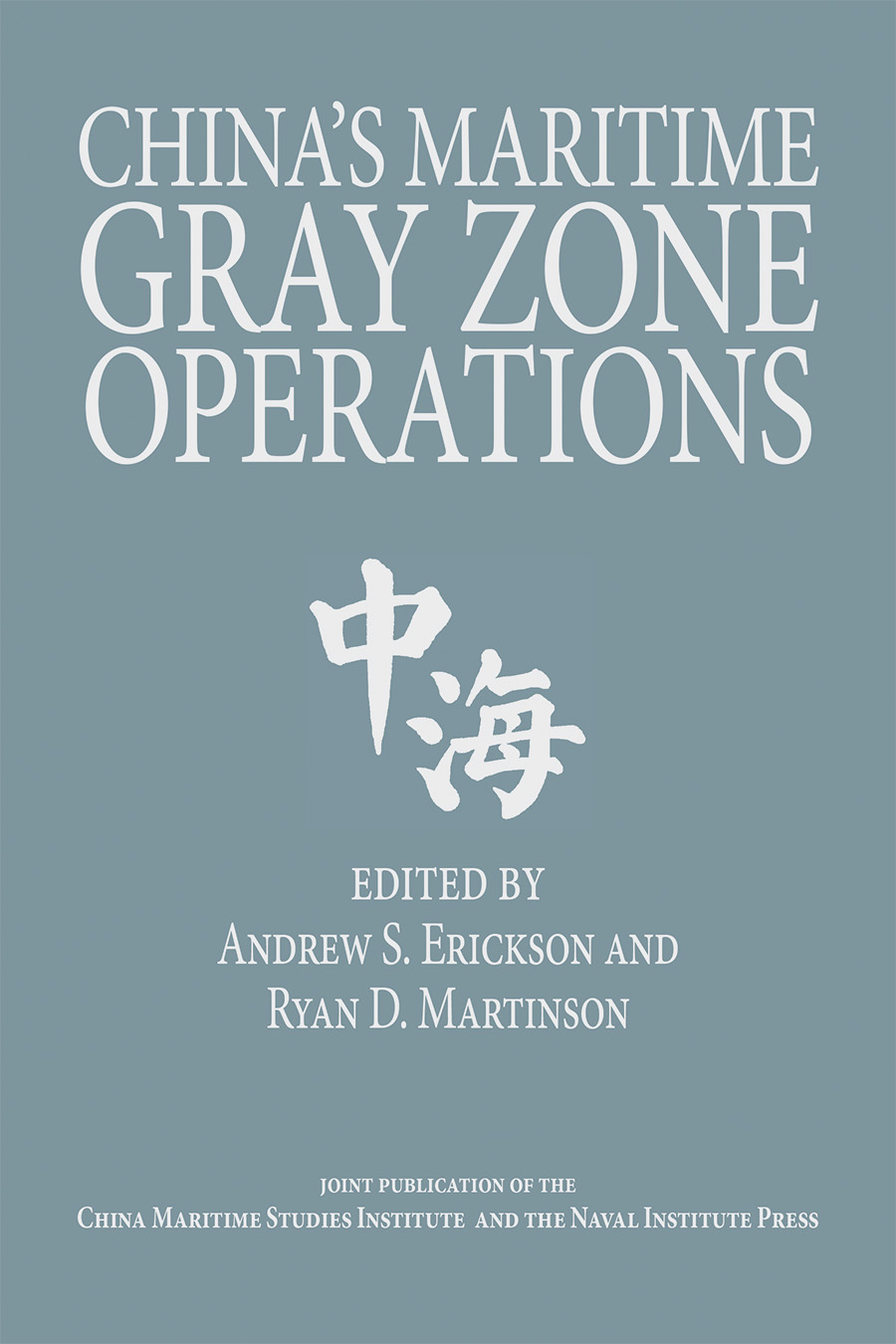
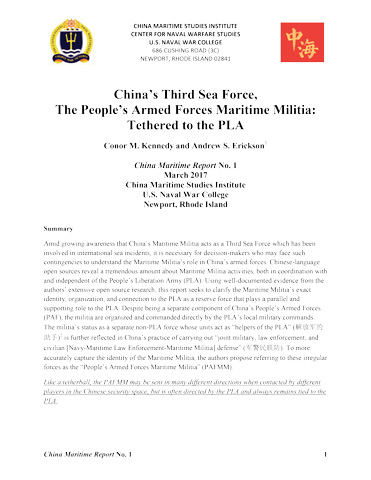
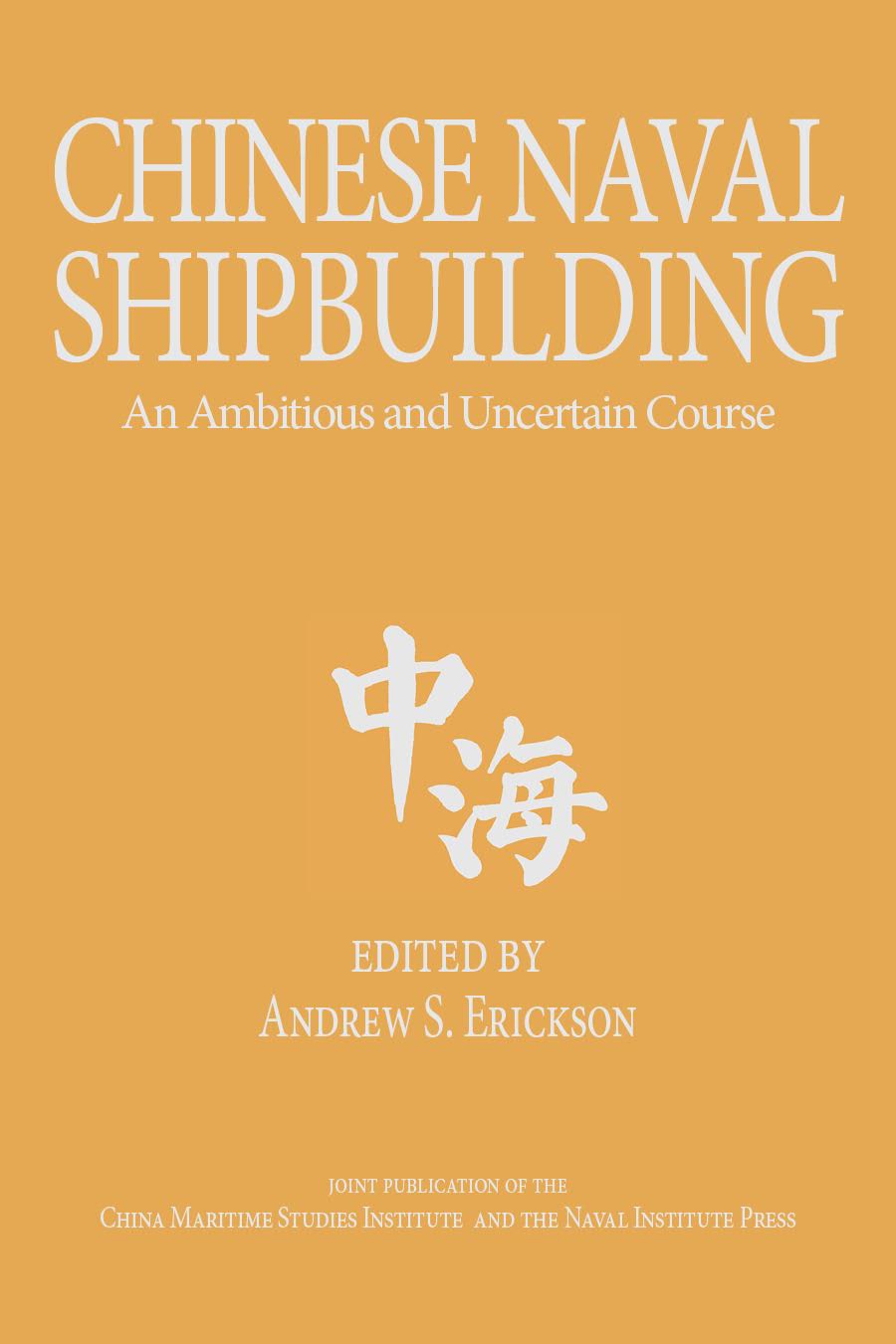


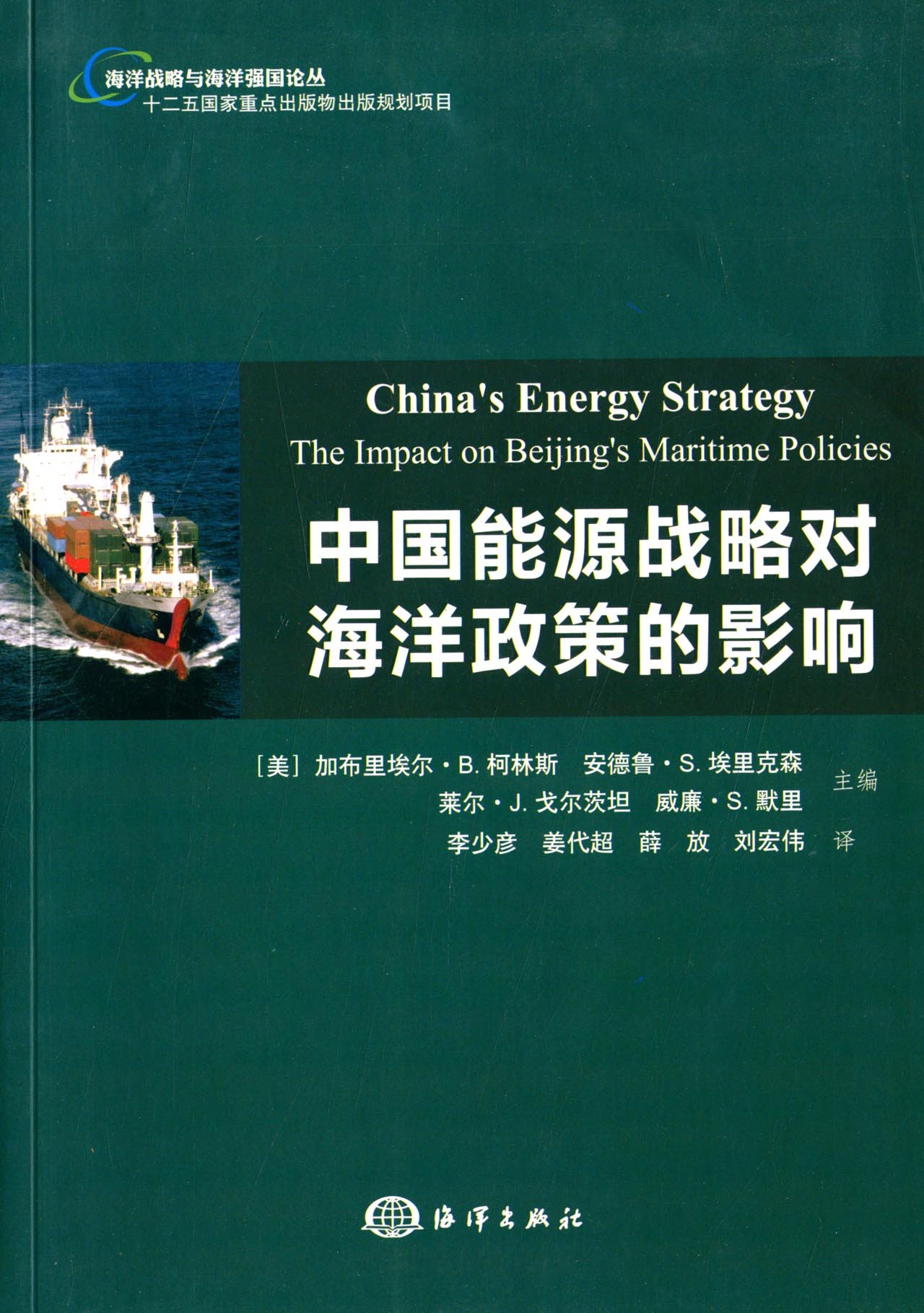
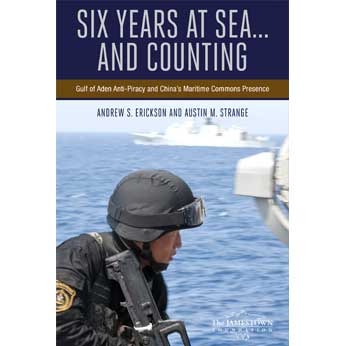


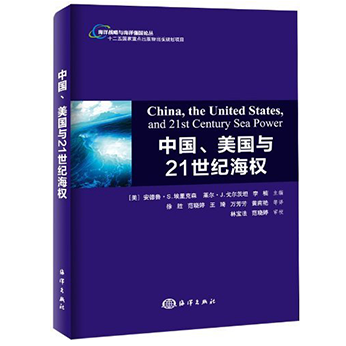
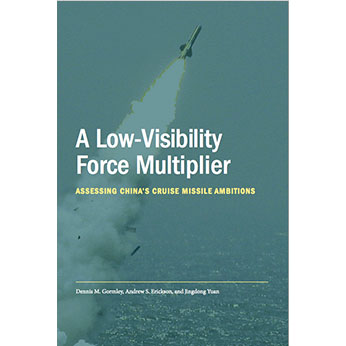
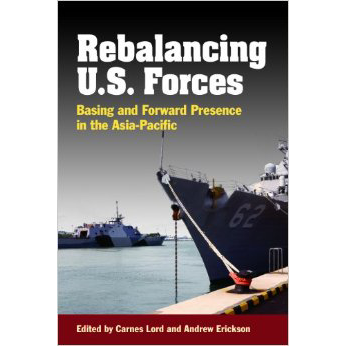
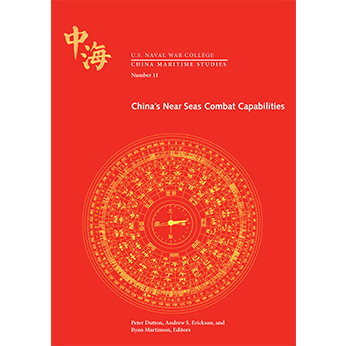
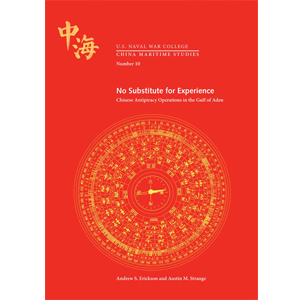
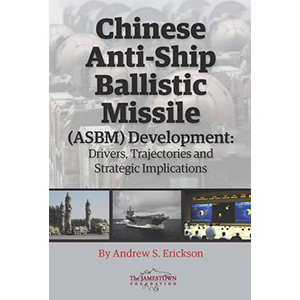
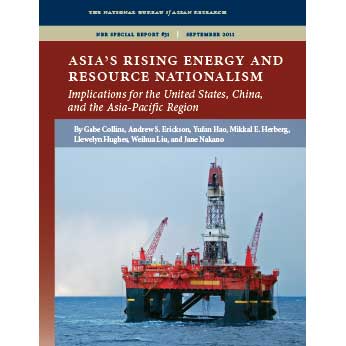
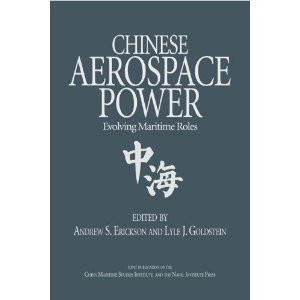
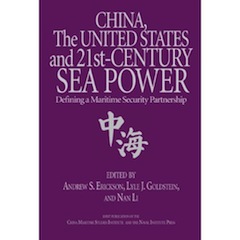


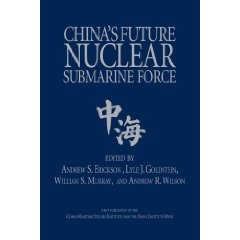
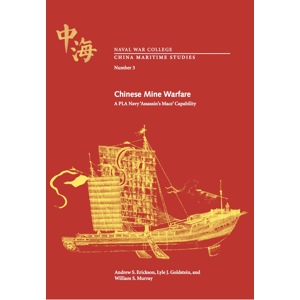
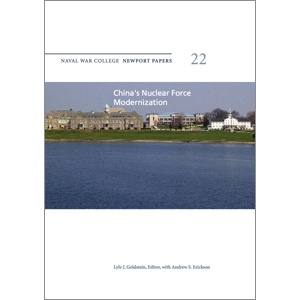
No comments:
Post a Comment